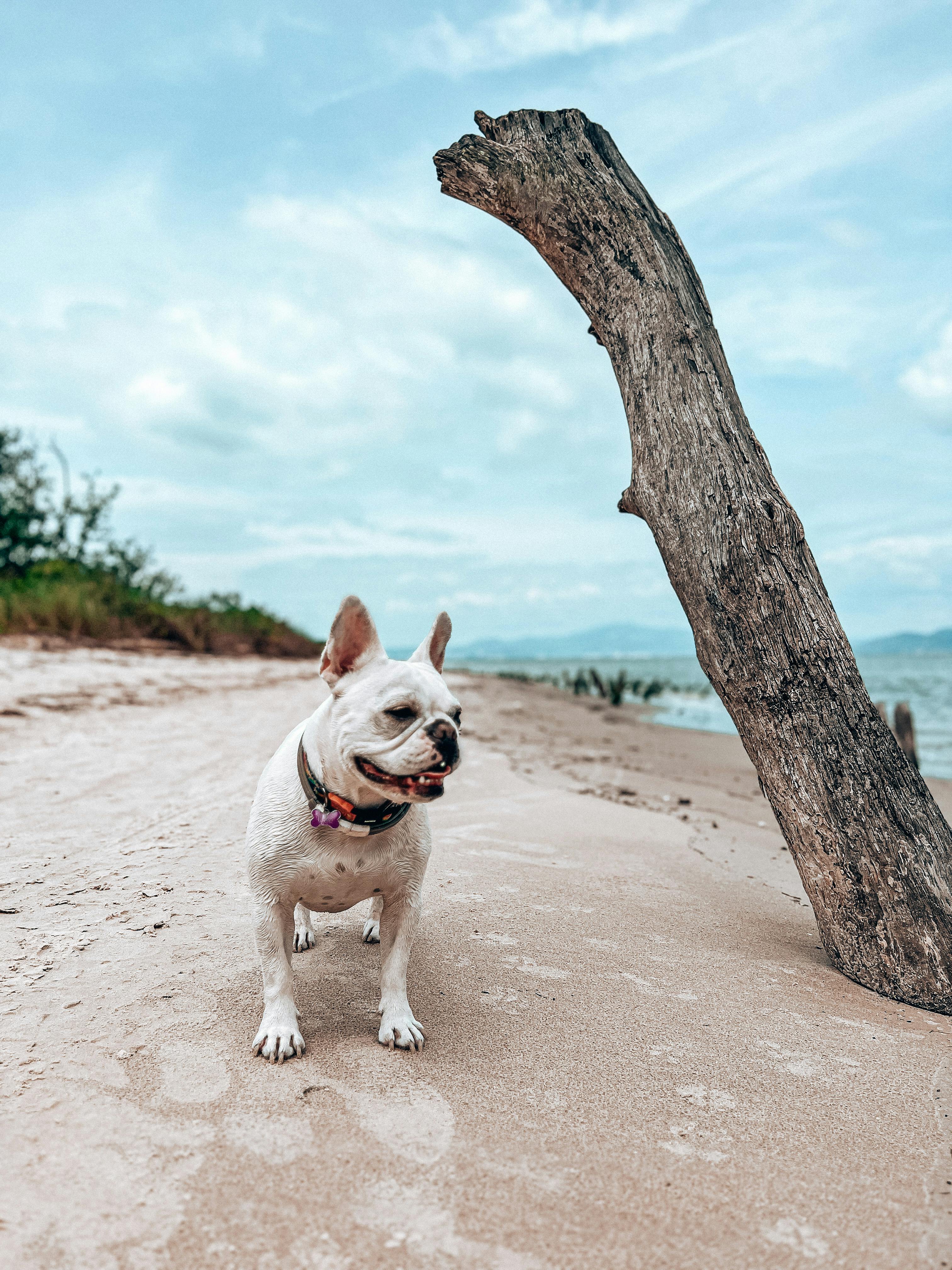If you're looking for a fun and engaging way to keep your canine companion mentally sharp, canine agility training may be just the thing for you. This type of training not only provides physical exercise for your furry friend but also challenges their mind by navigating obstacle courses and following your commands. Canine agility training is a fantastic way to strengthen the bond between you and your dog while keeping their mental faculties sharp and their energy levels in check. So, if you're ready to embark on an exciting adventure with your pup, read on to discover all the benefits of canine agility training for mental stimulation.

This image is property of images.pexels.com.
What is Canine Agility Training?
Agility training definition
Canine agility training is a popular dog sport that involves maneuvering your dog through a course filled with various obstacles, such as jumps, tunnels, weave poles, and more. It combines physical exercise with mental stimulation, creating a fun and challenging activity for both dogs and their owners. The goal of agility training is for the dog to complete the course in the shortest amount of time, while accurately navigating each obstacle.
Benefits of agility training for dogs
Agility training offers numerous benefits for dogs, both physically and mentally. It provides a way for dogs to release their energy in a constructive and engaging manner. By participating in agility training, dogs are able to fulfill their natural instincts and build a stronger bond with their owners. Additionally, agility training promotes mental sharpness, problem-solving skills, and sensory enrichment. It also helps improve their overall physical fitness, including strength, balance, and coordination.
Importance of Mental Stimulation for Dogs
Why mental stimulation is important for dogs
Just like humans, dogs need mental stimulation to lead a fulfilled and happy life. Mental stimulation is crucial for keeping dogs engaged, preventing boredom, and reducing the risk of behavioral problems. When dogs are mentally stimulated, they are less likely to exhibit destructive behaviors, such as chewing furniture or excessive barking. Mental stimulation also helps in preventing cognitive decline in older dogs and can enhance their overall cognitive health.
Effects of lack of mental stimulation in dogs
When dogs lack mental stimulation, they may become restless, anxious, or even depressed. Boredom can lead to various destructive behaviors as dogs try to find ways to entertain themselves. Some common signs of inadequate mental stimulation include excessive chewing, digging, hyperactivity, attention-seeking behavior, and even aggression. Without mental stimulation, dogs may become prone to behavioral issues that can negatively impact their overall well-being and quality of life.
How Canine Agility Training Provides Mental Stimulation
Physical exercise and mental stimulation connection
Canine agility training is an excellent way to provide dogs with both physical exercise and mental stimulation. Dogs need regular exercise to maintain their physical health, but exercise alone may not be enough to prevent them from getting bored. By incorporating mental challenges into their exercise routine, such as agility training, dogs are able to engage both their body and mind, leading to a more well-rounded and fulfilling experience.
Agility training as problem-solving
Agility training requires dogs to navigate through a course filled with obstacles, requiring them to think and make decisions quickly. This problem-solving aspect of agility training engages their brains and stimulates their cognitive abilities. Dogs have to assess each obstacle, determine the best course of action, and execute it efficiently. This mental challenge keeps dogs mentally sharp and can help improve their problem-solving skills in other areas of their lives as well.
Agility training as sensory enrichment
Agility training also provides dogs with sensory enrichment. The course includes different types of obstacles with varying textures, surfaces, and heights. Dogs learn to navigate these obstacles using their senses of sight, smell, and touch. The sensory stimulation they receive during agility training helps keep their minds active and engaged. It also helps them become more confident and adaptable in different environments, as they learn to navigate through unfamiliar and challenging situations.
Getting Started with Canine Agility Training
Preparing the dog for agility training
Before starting agility training, it is important to ensure that your dog is physically fit and healthy. Schedule a visit to your veterinarian to check for any underlying health conditions or issues that may affect your dog's ability to participate in agility training. It's also essential to ensure that your dog has a good foundation of obedience training, as they will need to follow commands and instructions during agility training.
Choosing the right agility equipment
When getting started with agility training, it is important to invest in the right equipment. This includes jumps, tunnels, weave poles, contact obstacles (such as the A-frame, dog walk, and teeter-totter), and pause tables. There are various types of equipment available, so it's essential to choose ones that are suitable for your dog's size, breed, and skill level. Consider consulting with a professional agility trainer or attending a beginner's agility class to get guidance on selecting the appropriate equipment.
Training techniques for agility
When training your dog for agility, positive reinforcement techniques work best. Use treats, praise, and rewards to motivate your dog and reinforce desired behaviors. Break down each obstacle into smaller steps and gradually increase the difficulty as your dog becomes more comfortable and confident. Patience and consistency are key. Practice short training sessions regularly to help your dog develop agility skills and improve their performance over time.

This image is property of images.pexels.com.
Basic Agility Training Exercises
Jumping exercises
Jumping exercises are an integral part of agility training. They help dogs develop strength, coordination, and proper jumping technique. Start with low jumps and gradually increase the height as your dog becomes proficient. Teach your dog to approach the jump from different angles and to take off and land safely. Practice straight jumps, as well as jumps with turns and combinations to enhance their agility skills.
Tunnel exercises
Tunnel exercises introduce dogs to navigating through confined spaces. Begin with a short and straight tunnel, and gradually introduce curved or longer tunnels. Use treats or toys to motivate your dog to enter the tunnel and move through it. Teach them to stay focused and maintain a consistent pace while inside the tunnel. Eventually, you can add obstacles before or after the tunnel to further challenge your dog's agility and problem-solving abilities.
Weave pole exercises
Weave poles are a challenging obstacle that requires dogs to zigzag through a series of upright poles. Start with only a few poles spaced widely apart and gradually decrease the distance between them as your dog becomes more proficient. Use treats or toys to encourage your dog to weave through the poles, rewarding them for successfully completing each set. Practice different entry angles to help improve their flexibility and coordination.
Advanced Agility Training Exercises
A-frame exercises
The A-frame is a tall, triangular obstacle that dogs must climb up and then descend. Start with a low height and gradually increase it as your dog gains confidence and skill. Teach them to climb up and down using controlled footwork. Practice different approaches, such as straight on, as well as angled entries. Ensure that your dog is comfortable with the height and always prioritize their safety when using the A-frame.
Dog walk exercises
The dog walk consists of a narrow plank or board elevated off the ground, with ramps on both ends. Dogs must walk confidently across the plank without falling off. Begin with a low height and gradually increase it as your dog becomes more comfortable. Teach them to maintain a steady pace and balance while traversing the plank. Gradually introduce turns and turns with elevation changes to challenge their agility and balance skills further.
Teeter-totter exercises
The teeter-totter, also known as the seesaw, is a dynamic obstacle that rocks back and forth as the dog walks on it. Start with a secured, leveled teeter-totter and introduce your dog to the movement gradually. Teach them to wait for the teeter-totter to touch the ground before proceeding. Work on building their confidence and coordination by gradually increasing the speed and elevation of the teeter-totter's movement.

This image is property of images.pexels.com.
Safety Considerations for Canine Agility Training
Health considerations before starting agility training
Before embarking on agility training, ensure that your dog's overall health is in good condition. Schedule regular check-ups with your veterinarian to address any health concerns and ensure that your dog is physically fit for agility training. This is especially important for senior dogs or dogs with existing health conditions that may impact their ability to participate safely. Also, be aware of any breed-specific health concerns that might affect your dog's agility training.
Training in a safe environment
Choose a safe and secure training area for agility sessions. Ideally, the space should be free from potential hazards, such as sharp objects or hazardous materials. Ensure that the area is properly fenced or enclosed to prevent your dog from wandering off during training. Consider using non-slip surfaces on contact obstacles to minimize the risk of slips and falls. Always supervise your dog during agility training to ensure their safety.
Monitoring for signs of fatigue or stress
While agility training is a fun and stimulating activity for dogs, it is important to monitor for signs of fatigue or stress. Dogs can become physically exhausted or mentally overwhelmed during training. Watch for signs such as excessive panting, drooling, or disinterest in the activity. If your dog appears tired or stressed, take a break and provide them with plenty of water and a comfortable resting area. Pay attention to your dog's body language and adjust the intensity and duration of training accordingly.
Agility Training for Different Breeds
Tailoring training for different dog breeds
Different dog breeds have varying physical capabilities, temperaments, and strengths. It is important to tailor agility training to suit the specific needs of your dog's breed. For example, small and toy breeds may require lower jumps and shorter courses, while larger breeds may excel in activities that require more strength and endurance. Research your dog's breed characteristics and consult with agility trainers or experienced breed-specific handlers to develop a training program that best suits your dog.
Breeds that excel in agility training
Certain dog breeds are known for their exceptional agility skills and excel in agility training. Border Collies, Australian Shepherds, and Shetland Sheepdogs are often the top performers in agility competitions due to their high intelligence and natural herding instincts. Other breeds that typically perform well in agility include Jack Russell Terriers, Papillons, and Belgian Malinois. These breeds tend to be highly energetic, fast, and quick learners, making them ideal candidates for agility training.
Challenges for certain breeds in agility
While some breeds may excel in agility training, others may face challenges due to their physical limitations or temperamental traits. Brachycephalic breeds, such as Bulldogs or Pugs, may struggle with endurance due to their shorter snouts, making it essential to ensure they do not overexert themselves. Breeds with a heavy body structure, such as Bulldogs or Mastiffs, may find jumping or maneuvering through obstacles more difficult. It is important to modify training exercises to accommodate for these challenges and prioritize the safety and well-being of your dog.
Competitions and Events in Canine Agility
Overview of agility competitions
Agility competitions provide an opportunity for dogs and their handlers to showcase their skills and compete against other teams. These events are typically conducted in a controlled environment, such as an enclosed arena or outdoor field with designated agility courses. Competitions are categorized by skill levels, ranging from beginner to advanced, and may include different classes based on the height or size of the dogs. Dogs are judged based on speed, accuracy, and handling skills, with the fastest and most precise teams earning top rankings.
Participating in local events
To get started with agility competitions, consider participating in local events or joining agility clubs in your area. These events provide a supportive and friendly environment for both novice and experienced handlers. It is a great opportunity to meet other agility enthusiasts, learn from experienced trainers, and gain exposure to the competition setting. Local agility events often offer classes for different skill levels, allowing you to gradually progress and improve your agility skills.
Preparing for competitive agility
Preparing for competitive agility requires consistent training, dedication, and practice. Focus on improving your handling skills, timing, and communication with your dog. Develop a strong bond with your dog and establish clear cues and commands. Attend agility workshops or work with professional trainers to refine your technique. Gradually increase the difficulty of training exercises to prepare for the challenges of competition courses. Above all, remember to have fun and enjoy the journey with your canine companion.
Additional Benefits of Canine Agility Training
Enhanced bond between owner and dog
Participating in canine agility training can significantly enhance the bond between you and your dog. Working together as a team, communicating non-verbally, and overcoming challenges strengthens the trust and connection between you. The shared experience of training and competing in agility creates a unique and rewarding relationship that goes beyond the training field.
Physical exercise benefits
Canine agility training offers numerous physical exercise benefits for dogs. The running, jumping, and maneuvering through obstacles provide a full-body workout, improving their strength, endurance, and overall fitness. Regular agility training can help prevent obesity and maintain a healthy weight for your dog. It also aids in joint health, as the various movements involved in agility training promote flexibility and increase range of motion.
Confidence-building for shy or fearful dogs
Agility training can be particularly beneficial for shy or fearful dogs. The structured training environment and positive reinforcement techniques help build their confidence and reduce anxiety. As they learn to master each obstacle and successfully complete the course, their self-assurance grows. Agility training provides a safe and controlled setting for these dogs to overcome their fears and develop a more positive outlook on various situations and environments.
By incorporating canine agility training into your dog's routine, you can provide them with the mental stimulation they need, while strengthening the bond between you. It offers a fun and challenging activity for dogs of all breeds and sizes, promoting physical fitness, mental sharpness, and problem-solving skills. Whether you choose to participate in competitions or simply enjoy agility training as a recreational activity, the benefits are numerous and rewarding for both you and your loyal companion. So, get ready to jump, weave, and tunnel your way to a happier, healthier, and more confident dog!


